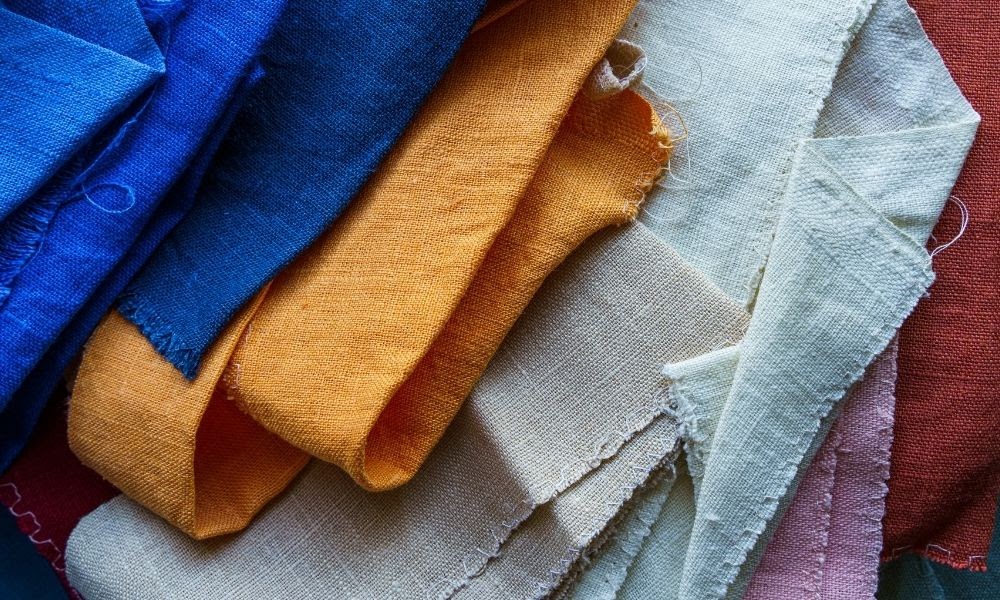Linen stands out for its strength, breathability, and unique look. If you’re thinking of buying linen for the first time, it’s easy to feel unsure with so many fabric choices and uses out there. This blog strips away the confusion, offering a clear, straightforward guide to linen fabric—from its history to why so many brands keep returning to this natural material.
You’ll learn what sets linen apart, how to identify good quality, the essentials for care, the various types on the market, practical uses, and exactly where to buy. By the end, you’ll have the facts needed to choose the right linen for your needs.
Introduction to Linen Fabric
Linen is made from flax fibers and is prized for being both durable and comfortable. Its textured finish and crisp feel make it popular in everything from bedding to summer shirts. More buyers want natural fabrics, and linen fits the bill thanks to its plant-based source and low environmental impact.
This guide is for anyone who wants reliable details without fluff. Whether you’re planning a new wardrobe, sewing a home project, or stocking a fabric shop, here’s what you need to know before buying linen.
History and Origins of Linen
Linen dates back thousands of years. Ancient Egyptians used it for clothing and mummification, valuing its purity and lightweight feel in a hot climate. Over time, linen traveled across Europe, with regions like Belgium and Ireland building reputations on their fine flax production.
Despite advances in textile tech, the essentials of flax cultivation and processing haven’t changed much. Modern linen still relies on naturally grown flax, harvested, retted (soaked to break down the stalks), and spun into strong threads.
Today, linen production remains highest in Western Europe, especially in Belgium, France, and the Netherlands, although it’s processed and woven worldwide.
Benefits of Using Linen Fabric
Linen offers a bundle of clear advantages for consumers, designers, and manufacturers:
- Durability: Linen is around 30% stronger than cotton. It gets softer over time but remains tough even with frequent washing and heavy use.
- Breathability: The loose weave lets air flow, which keeps the wearer or user cool. This makes linen an obvious choice for warm climates and summer wear.
- Absorbency: Linen can absorb up to 20% of its weight in moisture before feeling damp. That’s why it’s often used for towels and high-end bedding.
- Hypoallergenic: Linen has natural antimicrobial properties. It resists mold and dust mites, making it ideal for people with allergies or sensitive skin.
- Low Environmental Impact: Flax requires less water and fewer pesticides than most crops. Every part of the plant can be used, so there’s little waste in the production process.
- Unique Texture and Drape: Linen’s natural slubs (small knots) add character. It wrinkles, but many see those wrinkles as proof of quality.
Different Types of Linen
Not all linen is the same. Each type offers different characteristics depending on how it’s woven and finished.
Plain Weave Linen
- Lightweight and crisp.
- Used for shirts, blouses, handkerchiefs, and summer dresses.
Damask Linen
- Features intricate patterns woven into the fabric.
- Smooth, lustrous finish. Suited for tablecloths and fine napkins.
Loosely Woven Linen
- Highly absorbent, often labeled as “bird’s eye” or “huckaback” linen.
- Best for tea towels and dishcloths.
Sheeting Linen
- Heavier weight with a tighter weave.
- Preferred for bedsheets, dresses, and suits.
Toweling Linen
- Strong, with extra absorbency.
- Used for bath and kitchen towels.
Blended Linens
- Linen mixed with cotton, viscose, or synthetics.
- Blends may cost less, wrinkle less, but can lose some of linen’s distinct feel and breathability.
How to Care for Linen
Caring for linen doesn’t have to be complicated. The fabric is strong but does best with a few basic steps:
- Washing: Machine-wash on a gentle cycle using cool or lukewarm water. Use mild, bleach-free detergent to protect fibers.
- Drying: Air-dry when possible. If using a dryer, select a low heat setting and remove while damp to limit wrinkles.
- Ironing: For a smoother finish, iron linen while still slightly damp. High heat works well, but uses the steam function.
- Storing: Store in a cool, dry place. Linen breathes, so don’t keep it in plastic. Avoid direct sunlight to prevent fading.
Note: Linen softens with every wash and holds dye well, so colors stay bright.
Common Uses of Linen Fabric
Linen’s flexibility gives it a place in many industries:
Apparel
- Dresses, shirts, blouses, tunics, pants, suits, and children’s clothing. Its cool touch and moisture-wicking qualities make it a summer staple.
Home Textiles
- Tablecloths, napkins, placemats, curtains, cushions, bed sheets, and duvet covers. The texture adds a visual layer to interiors and bedding feels naturally cooling.
Hotel and Hospitality
- High-quality sheets and towels ensure guest comfort and easy laundering.
Upholstery
- Linen’s durability makes it suitable for slipcovers, cushion covers, and decorative pillows.
Crafts and Art
- Used as a canvas in fine art or for handmade book bindings and embroidery.
Industrial Uses
- Because of its strength, linen is sometimes used for sailcloth, canvas, or eco-conscious packaging.
Where to Buy Linen Fabric
Finding quality linen involves a bit of research. Here are top sources:
- Fabric Stores: Both brick-and-mortar and online shops carry linen by the yard or meter. Specialized stores may offer premium European linens or unique blends.
- Wholesale Suppliers: For bulk buyers, wholesalers provide a range of options, often with lower prices and large minimum orders.
- Direct from Mills: Certain manufacturers sell directly. This can give better pricing and access to a wider selection, including custom weaves and colors.
- Marketplaces: Sites like Etsy, eBay, and Amazon sell linen, but quality can vary. Always check seller ratings and ask about the origin of the fabric.
- Sustainable Brands: These often source certified organic flax and follow stringent environmental standards.
Before buying, look at thread count, weight (GSM), country of origin, and care labels. Responsibly-produced linen costs more but delivers better value in durability and comfort.
Why Linen Is a Smart Fabric Choice
Linen gives a reliable mix of practicality and aesthetics. Its strength, natural breathability, and easy-care qualities make it a favorite for both fashion and home needs. If you want a fabric that lasts, supports comfortable living in hot weather, and brings a unique touch to any application, linen delivers.
Choosing linen supports low-waste, low-water agriculture and offers a better long-term return. Whether you’re a beginner or looking to refine your fabric choices, linen fits into a wide range of projects with minimal fuss. Invest in the best quality you can afford and look for certified sources to guarantee long-term value.
Next Steps:
If you’re set to buy, start with samples or small cuts to assess feel and performance. Review product descriptions, check supplier backgrounds, and don’t be afraid to ask for technical details or certifications.
For fashion businesses and designers, building a strong sourcing relationship with a trusted supplier is key. Consider ordering from platforms that guarantee quality, ethical sourcing, and global delivery.
Sustainable fabrics are eco-friendly textiles made with minimal environmental impact, ethical sourcing, and biodegradability in mind. Natural options like organic cotton fabric and linen fabric are highly sustainable—cotton grown without harmful chemicals reduces water usage, while linen, made from the flax plant, thrives with minimal resources and is fully biodegradable. Other sustainable choices include hemp, TENCEL™, and Cupro (Bemberg), all made from renewable sources using responsible processes.
Explore our wide selection of custom-printed, ready mill-dyed, and yarn-dyed fabrics—designed to meet the unique needs of your next collection. For tailored support or any questions, feel free to contact us at hello@fabriclore.com. With Fabriclore, enjoy a smooth, reliable, and cost-effective fabric sourcing experience.




